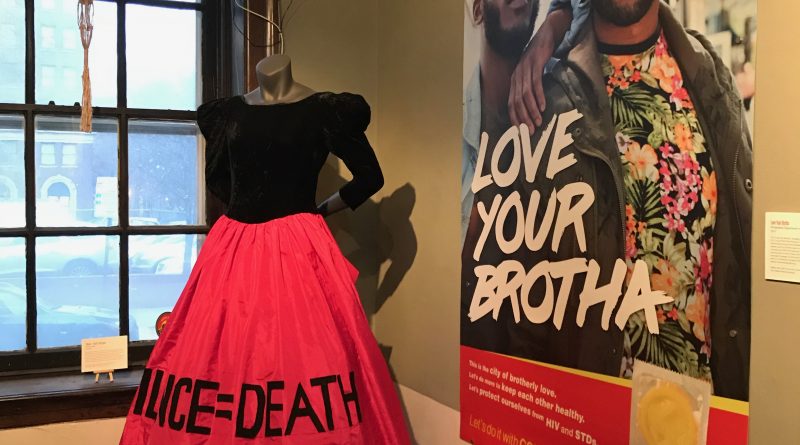Still Fighting For Our Lives: A Look Back on the History of AIDS/HIV
BY CLAIRE HALLORAN
Between the years of 1980 and 2002, over half of a million Americans died from HIV/AIDS. The AIDS crisis is known as a dark piece of the LGBT community and the United States’ history, as the government during the time attempted to gloss over the fact that thousands of men and women of all races and sexualities were dying.
While symptoms of the disease began showing in 1978, it was not until 1985 that President Ronald Reagan even said the word “AIDS” in public, and it wasn’t until years later that the government began addressing the issue with anti-discrimination laws, and funding for a cure.
Despite the sadness and tragedy that surrounds this part of history, the William Way LGBT Center in Philadelphia thought it important to shine light on the AIDS/HIV crisis through their newest exhibit, “Still Fighting For Our Lives”, which is open to the public in the center’s lobby.
“This is a very visual collection, and it makes for a compelling exhibit,” said John Anderies, the archivist at the center’s John K. Wilcox, Jr. Archives.

The center’s exhibit, which opened in early November, features dozens of posters, ad campaigns, media, and mementos used during the crisis to spread awareness of the disease, promote safe sex and prevention, and shed attention on how widespread the crisis was, although the center’s entire archives include over 5,000 pieces.
“One of my favorite pieces is a large poster with the photo of a man’s chest with the word “sex” written on it,” Anderies said. “They were hung up in bars all over the city, and there were sets of business cards that were always next to them with information about safe sex. I really love it because the campaign was such a hit, that the cards would immediately be taken as soon as they were put up. People would hang them up in their apartments as a token.”
Another popular piece in the exhibit is a sheet of loose leaf paper, with unorganized handwriting quickly scribbled on, that details the last moments of the life of Kiyoshi Kuromiya, a local activist, and a member of ACT UP, the leading AIDS/HIV activist group.
In 2000, he fell ill due to complications from AIDS, and his friends and family held a two-week vigil, where someone would sit next to his bed and write down every moment of his last days.
The sheet that Anderies selected to show at the exhibit was from the earlier days of the vigil, when Kuromiya was still present.
“It is such an intimate look into his last days,” Anderies said. “It’s heart-wrenching, but there are still some lighter, happier moments. Like on the paper displayed, it notes that he sung Penn’s fight song.”
The exhibit also features more recent campaigns, such as “Love Your Brotha”. The campaign poster was spread throughout Philadelphia in 2017 to educate the community that HIV and STDs are still a major issue, and informs them on how to keep themselves and partners safe.
The pieces shown in the exhibit are all from the center’s archives, and came mostly from donations from the AIDS Library of Philadelphia, private citizens, and other organizations dedicated to preserving the history of the AIDS/HIV crisis.
According to Anderies, the exhibit has been positively received by the community, with a steady stream of visitors coming to see it while its open every weekday from 11 a.m. to 9 p.m., and weekends from 12 p.m. to 5 p.m. until the end of December.
After the exhibit comes to a close, Anderies and the archivists at the center plan to digitize the pieces shown, as well as other pieces from their collection on AIDS.
To accomplish this, the Way LGBT Community Center has been raising money through a GoFundMe campaign.
Today, 1.2 million Americans are still fighting AIDS, and all around the world this month, people are recognizing World AIDS Awareness Month.
One example of this can be found on Amazon. The multi-billion dollar company has paired up with (RED), a brand that partners up with other companies to promote the awareness of AIDS. For the month of December, when you purchase the (RED) items, which range from clothing, to vitamins, to Beats speakers, a portion of your purchase will go towards fighting AIDS in Africa through The Global Fund.
On the first of December, the Philadelphia AIDS Fund celebrated World AIDS Day by visiting different universities, schools, workplaces, and more to educate the community about the AIDS crisis.
The preservation of archives at the William Way LGBT Community Center is possible due to grants, but they still rely on community support through volunteering and donations. More information can be found at waygay.org.




